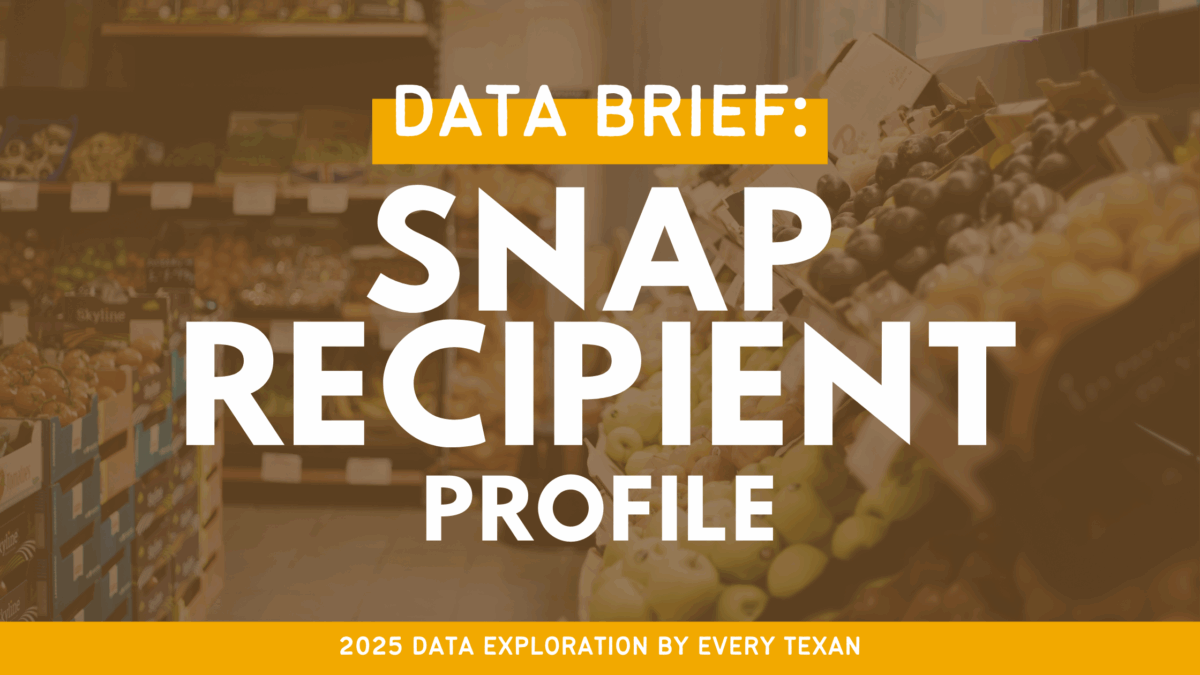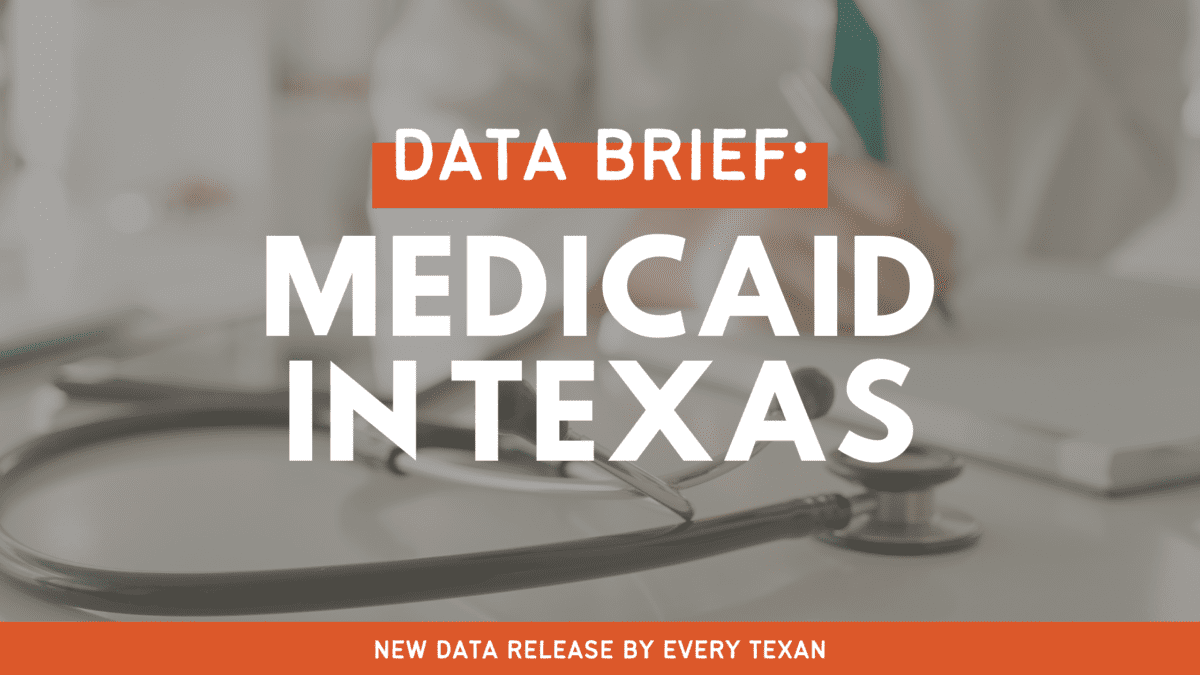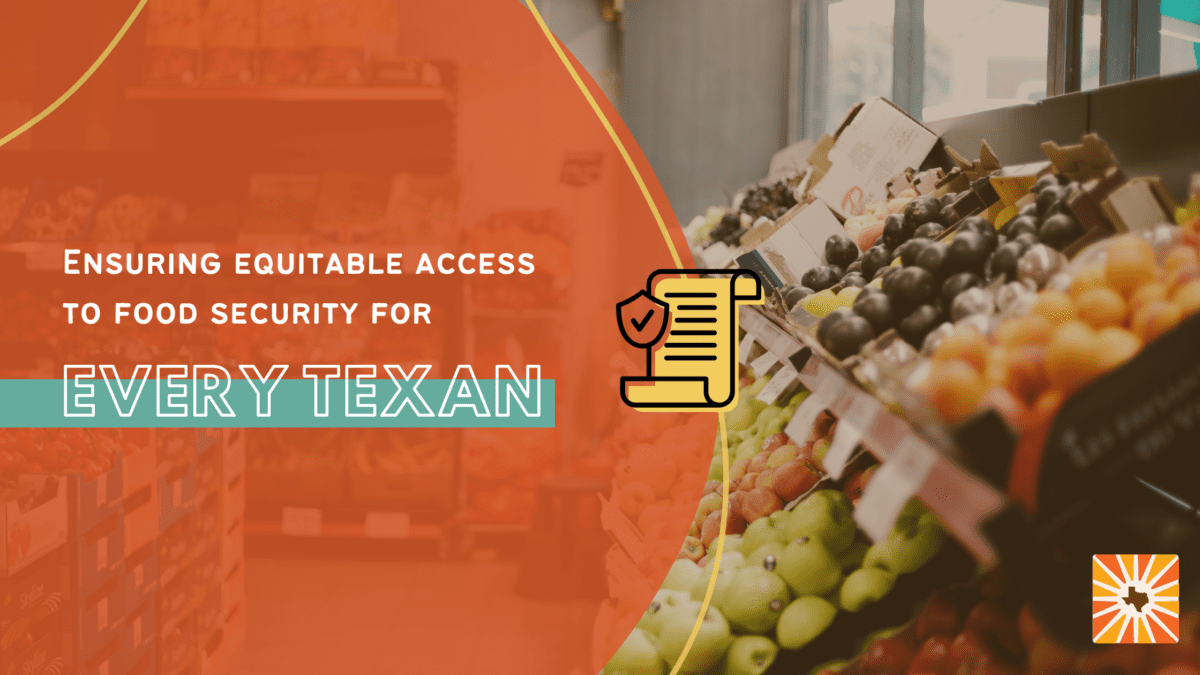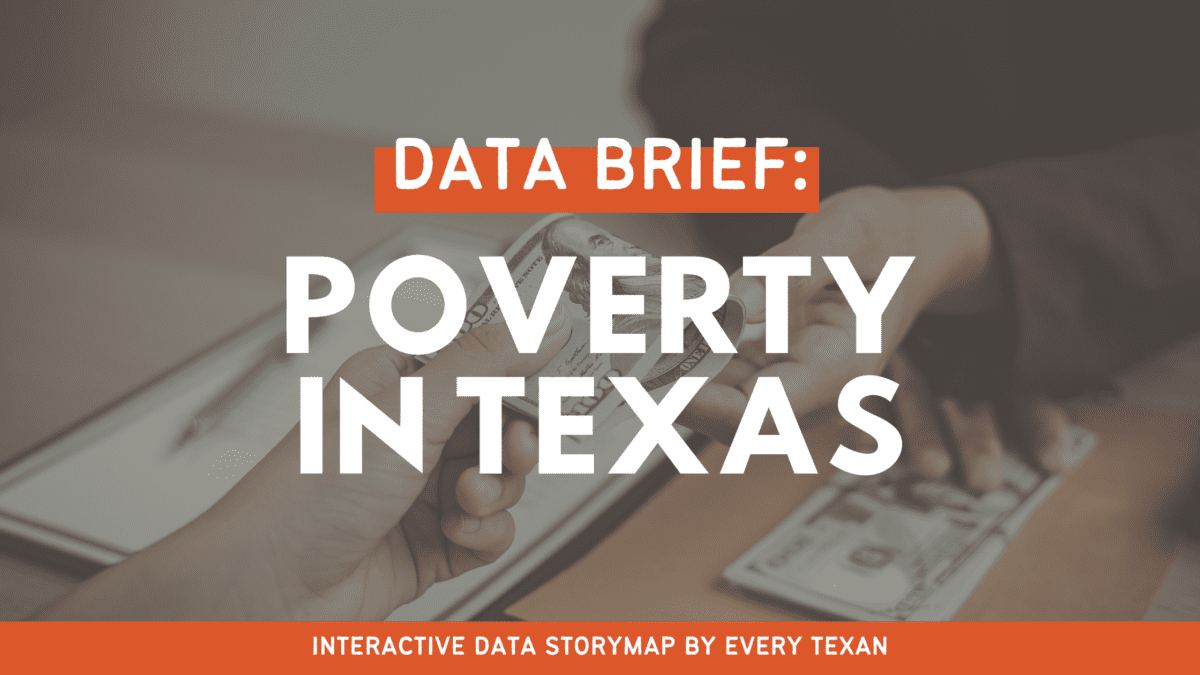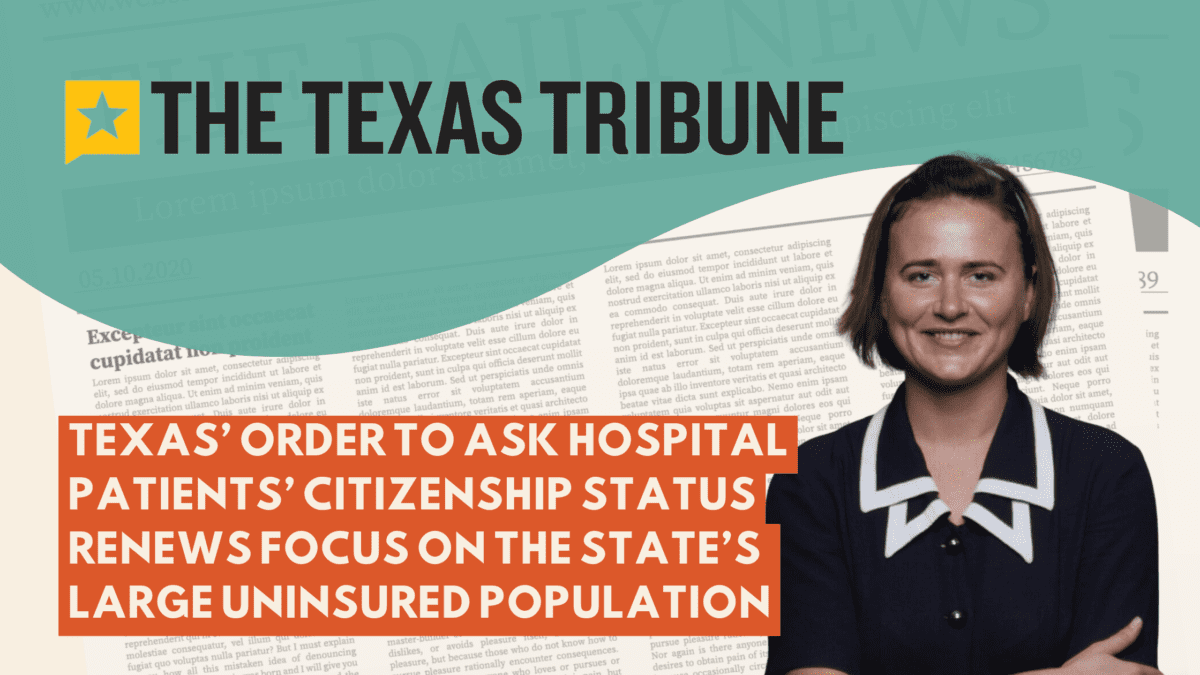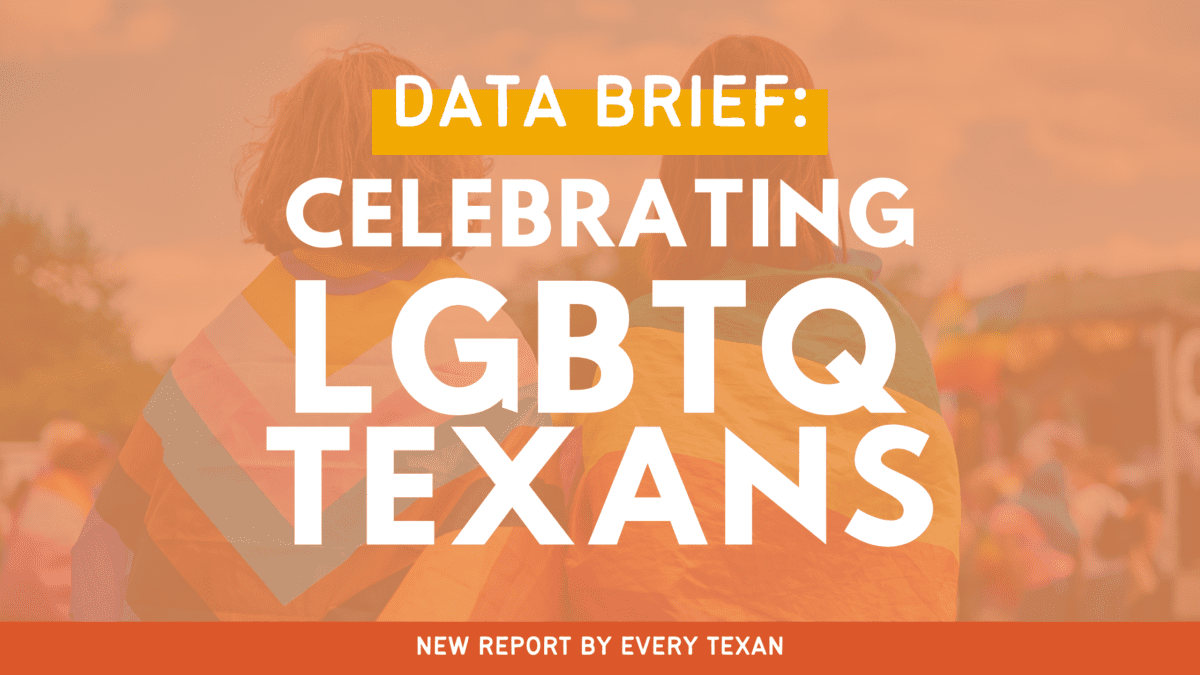News is buzzing with details of the recently enacted H.R.1 (coined the “One, Big Beautiful Bill Act”) which will affect the Supplemental Nutrition Assistance Program (SNAP) and Medicaid programs millions of Texans rely on. As these changes will operate within existing state policies and processes, we are tracking their projected impacts on Texans—from the $1.8 billion dollars in SNAP expenses per year that will fall to the state, to the hundreds of thousands of Texans who will lose some or all of their benefits.
SNAP is the country’s most efficient and effective anti-hunger program and is meant to serve people who, for one reason or another, do not earn sufficient income to meet basic needs. The bulk of SNAP recipients are children, people with disabilities, and working adults. SNAP also helps prevent hunger among veterans, unhoused people, and seniors by providing approximately $6 a day on a Lone Star Card for enrolled people.
SNAP Before H.R.1
Texas already has two types of mandatory work requirements, general and time-limited. H.R.1 impacts the time-limited work requirements.
Before H.R.1, the mandatory time-limited work requirement only applied to able-bodied adults without dependents. These requirements did not apply to households with dependent children 18 and under, seniors 55–64, veterans, people experiencing homelessness, former foster youth 18-24, and certain classes of immigrants with legal protections.
There are limits to how long adults without a documented disability or dependents can receive SNAP benefits. Able-Bodied Adults without Dependents (ABAWDs) are limited to three months of benefits every three years unless they meet SNAP work requirements. While receiving SNAP benefits, ABAWDs must work with TWC to document that they work, train, or complete E&T programs for 80 hours per month. These time-limited work requirements are so cumbersome to meet, track, and report that most ABAWDs are unable or unwilling to meet the requirements. Therefore, in Texas, we only have about 136,000 people each year that TWC is federally mandated to assist in finding E&T slots and the agency struggles to meet that mandate due to a lack of available slots in which to place people. The number of ABAWD time-limited participants is about to balloon because H.R.1 eliminates many of the exempted populations.
SNAP After H.R.1
With the passage of H. R.1, lawmakers expanded work requirements so that caretakers of children 14–18, caretakers of dependents over 18 (think an aging parent above 54), unhoused people, and veterans must work or participate in a TWC-approved program at least 80 hours a month. Moving forward, formerly exempt people will need to meet the same work requirements that prevent so many able-bodied adults without dependents from benefiting from SNAP for more than three months in three years. That policy shift is the result of H.R.1.
The following table outlines the general provisions of H.R.1’s changes and their impact on Texas. This analysis concerns the third issue in the list below, SNAP Work Requirement Time Limits for Able-Bodied Adults, and some Texas-specific policies that will increase the number of people who lose SNAP because of the new law in Texas.

Although we cannot change the federal funding cuts to SNAP that will remove SNAP benefits for so many, advocates can work with HHSC to remove some Texas-specific obstacles to SNAP enrollment. If successful, our advocacy can help tens of thousands of children and seniors keep their access to SNAP in the coming years.
Texas SNAP enrollees face two unique challenges as H.R.1 takes effect:
- HHSC’s Full Family Sanctions policy; and
- Texas Workforce Commission (TWC) houses a backlog of SNAP work requirement cases requiring placements and follow-up.
Both are beyond SNAP recipients’ control but will affect their household’s benefits.
Full Family Sanctions
‘Full family sanctions’ is a Texas HHSC policy that compounds the detrimental impact of the new law’s work requirements. The sanction occurs when the primary parent or caretaker in a SNAP household cannot meet the 80 hours of work per month HHSC requires to receive SNAP benefits. As a result of not meeting required hours, HHSC removes the entire household from the SNAP program for up to six months until the head of household can reapply and/or demonstrate they are actively meeting the work requirements. When implemented, these sanctions cause children and dependent seniors to lose their benefits, even though they themselves don’t have to meet the work requirements—only the head of the household does.
The Sanctioning Process
To enforce work requirements, Texas HHSC and TWC work with the USDA to prioritize monitoring SNAP recipients with mandatory time-limited requirements. This means people who used to be exempt from the work requirements are now the most stringently monitored of all SNAP recipients.
TWC monitors individuals’ work-related efforts and refers those who have not worked sufficient hours back to HHSC. HHSC sends a letter to SNAP recipients requiring them to demonstrate that they have ‘good cause’ to have not met their required work hours. The SNAP recipient must respond to the good cause letter in 10 days. Then, HHSC decides to either reinstate the SNAP recipient in the program, or they can keep the household off benefits and bar them from reapplying for up to six months. Recipients also need to keep a record of job-related activities to submit to TWC, who must process and verify this record.
Example 1: Before the bill, a caretaker could drop in their working hours to care for their dependents without sanctions. With the new bill, caretakers cannot drop below the 80-hour requirement unless they get approved for a ‘good cause.’ If they cannot meet the ‘good cause’ exemption or are delayed in responding to the letter, then the full family sanction goes into effect. Because the caretaker couldn’t meet 80 hours of work that month, the household and any children are also removed from the program. They can be reinstated after a month of meeting requirements.
Example 2: While the example above is for caretakers, work requirements also expand to include veterans, seniors aged 55-64, people experiencing homelessness, foster youth who age out of the foster program, lawful immigrants, and asylum seekers or refugees. This means a 62-year-old who started receiving SNAP when they were 60 will be removed from the program unless they join a job training program or get work. This is a challenging process in a state whose primary workforces are technology, government, healthcare, and education. Professional jobs require staying current and maintaining certain certifications which also cost money to renew or begin. Other meaningful jobs such as those in agriculture, restaurants, or retail industries require physical stamina that seniors (55-64) may not be able to perform.
Importantly, benefits application assisters around Texas and SNAP enrollees on time-limited work requirements for ABAWDS should be familiar with good cause letters. Those letters can help people stay on SNAP now and once HHSC implements H.R.1’s newly expanded work requirements. Providing good cause documentation with SNAP applications now and moving forward will prevent HHSC from denying SNAP eligibility to individuals and families and reduce the time it takes for HHS to reinstate benefits. SNAP applicants, enrollees, and assisters can review the good cause exceptions for SNAP in the Texas Works Handbook policy A-1860. If the applicant meets any of the exceptions, they should proactively submit evidence with their application, mention it in their SNAP interview, and request a good cause letter to have on hand in case of an unexpected event. Most individuals should be able to meet the requirements of the letter.
The Impact on Texans
H.R.1’s requirements will affect more than 700,000 Texans, including veterans, aging seniors, and parents who depend on SNAP as an ongoing bolster to low paying jobs or their SSI and VA benefits, according to 2023 PUMS microdata analyzed by Every Texan. These populations need to prepare for losing SNAP eligibility after three months of not meeting the work requirements.
Between H.R.1’s work requirements for formerly excluded populations (veterans, homeless people, etc.), Texas’ full family sanctions policy will increase the number of people whom HHSC removes from SNAP, and therefore children in those households as well (the most vulnerable population to the consequences of hunger.) Seniors and disabled people will also suffer under this policy. These sanctions put in jeopardy the 354,000 Texans who are exempt from work requirements. That’s more than 350,000 Texans who are disabled, elderly, or children who will be sanctioned from participating in SNAP if their head of household cannot meet the work requirements.

These changes will also affect our state agencies. HHSC will need to revise computer systems and are expecting increased call volume. TWC will have to dramatically increase resources to meet needs, as their annual caseload expands from ~150,000 to ~700,000 Texans in need of assistance meeting work requirements. Workers from both agencies will see their workloads increase as they review tens of thousands more documents from the SNAP enrollees, who remain confused by reporting requirements and lose benefits for the entire family.
There’s no getting around the paperwork of the matter for either side of the aisle. The federal changes coupled with state policies mean more paperwork for HHSC, TWC, and busy working adults with fewer resources available, despite studies demonstrating that work requirements do not lead to improved or increased employment for SNAP recipients.
Furthermore, the USDA Food and Nutrition Services (FNS) repeatedly reports that Texas does not have enough E&T slots to meet the current needs of the state. If program participation balloons as a result of H.R.1, both agencies and working recipients are set for failure. The cost for TWC to assist one individual with finding and maintaining their E&T slot in 2025 is $1,367. They estimate the cost to serve the total current population (136,000) to be $187 million. Under the new mandatory work requirements, Texas will need to serve 738,000 households at an increased cost of $900 million.
For the second richest state in the U.S., we have the most citizens living in food insecurity. There are already 1.8 million hungry children in Texas, and while the program’s new work requirements are federal law, Texas does not have to compound that with delayed paperwork or a lack of E&T openings. Bureaucratic impediments shouldn’t cause hunger.
These are Texas’ choices to make. Let’s take the simple step of eliminating Texas HHSC’s full family sanctions and the pain they add to H.R.1. Removing this internal optional policy will ensure children and other dependents do not lose their access to food because of paperwork. We believe that considering the sweeping changes to SNAP and the governor’s veto of the Summer EBT program, this moment is the perfect opportunity for HHSC to rollback this policy in support of Texas children.

